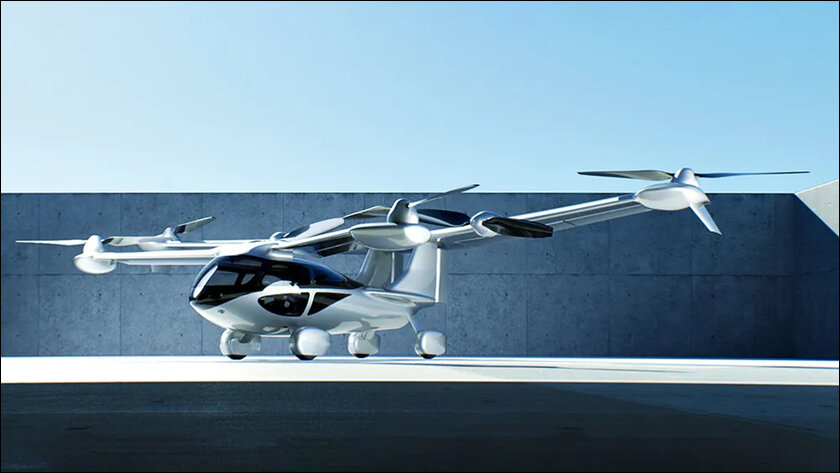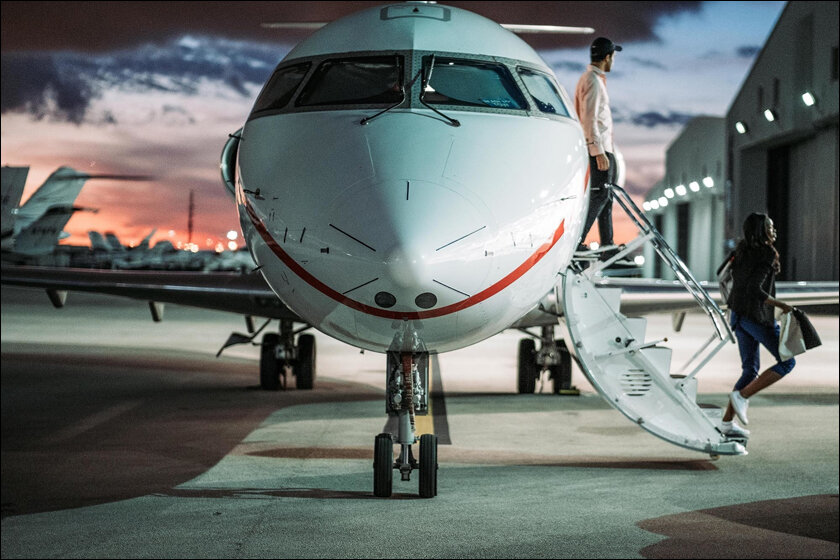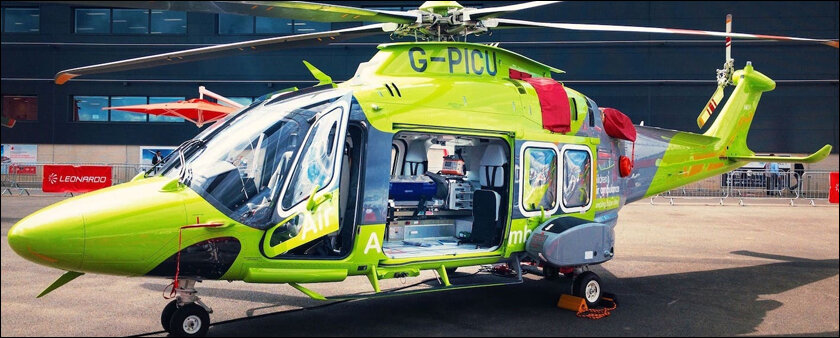ePlane claims its eVTOL is ten times faster than a car and a seat on this taxi will only be twice as expensive as an Uber!.
There’s a meme that’s been doing the rounds on the internet which implies that while humans predicted flying cars by 2023, the reality is that we have to print warning labels on wrappers so people don’t eat them.
Funny as that may be, it may not be accurate much longer; flying cars are officially here. Earlier in June this year, the first fully electric flying car legally received approval from the US govt. If you grew up around the 80s or 90s, you’re probably thinking about the Jetsons cartoons and how we might live long enough to see that one day.
The car in question is 100% electric and has a range of about 200 miles driving or 110 miles flying on a single charge.

eVTOLs and AirCars
Manufactured by Alef Aeronautics, the Model A is classified as a low-speed vehicle since it can travel a maximum of 25 mph on a paved road, the reasoning being if you want to go faster you can take to the air. Now while the FAA has noted that the Model A is not the first eVTOL (electric vertical take-off and landing vehicle) to receive its approval, the manufacturer claims it is the first of its kind that can run on the ground and in the air while also being able to fit in the parking space for a regular car. With a price tag of $300,000, the company claims it already has about 440 orders with deliveries to begin by the fourth quarter of 2025.

Another eVTOL that has received the special airworthiness certificate from the FAA is the ASKA A5 which is quite different from the Model A. Unlike the Model A that’s fully electric, the ASKA A5 is a hybrid with both batteries and an engine to charge them in-flight. Also unlike the Model A which looks pretty much like a car, the A5 looks like a helicopter even though it can drive on the road.
All flying cars are not eVTOLs, however, and the AirCar by Prof Stefan Klein is a good example. The AirCar features a BMW engine that runs on regular gasoline, requires a runway to take off and land, and completed a 35-minute flight between two airports in Slovakia in June 2021. Additionally, the car takes two minutes and 15 seconds to “transform” into its flight version.

Airports for Flying Cars
Now while it might seem that getting cars to fly was the hard part and we’re there already, there needs to be a lot of infrastructure in place to avoid chaos. Earlier in April last year, the UK built the world’s first airport for flying cars and drones. Dubbed the pop-up Air-one, the entire airport is powered by hydrogen fuel cells and is designed for zero-emission drones and flying cars, it can also be dismantled and set up in a new location. These airports are also called Vertiports. This particular one is a partnership between the Coventry City Council and UK startup Urban Air-Port Ltd. Ricky Sandhu, founder of Urban Air-Port, plans to build 200 more Vertiports worldwide.
In more recent news Urban Air-Port Ltd has partnered with Korean Hanwhaa Systems and Korea Airports to build “high throughput vertiport infrastructure solutions” in Korea. Similarly, United Airlines and California-based startup Archer Aviation have made plans to build a Vertiport in downtown Chicago that will help beat the traffic to the airport which usually takes over an hour due to congestion.

With the Vertiport in place, it will take just ten minutes and help relieve some traffic congestion. Other upcoming Vertiports networks include one in Abu Dhabi that is being built in collaboration with French firm Groupe ADP.
In India, MD Amit Datta of Gurugram-based Fly Blade India was quoted explaining how the next three years will be dedicated to building Vertiports.

Flying Cars in India
Fly Blade India has also partnered with Brazilian Aerospace giant Embraer in an effort to bring eVTOLs to India within the next five years., with Bengaluru earmarked as the first destination. Jaunt Air Mobility headed by Indian-American CEO Chiranjeevi Kathuria also recently announced a partnership with L&T Technologies Services to set up a manufacturing plant for eVTOLs in India.
However, they might both be beaten to the buzzer by IIT Madras-based startup called ePlane which has already unveiled its prototype at the Aero India show in Bengaluru in February this year. The company claims its eVTOL is ten times faster than a car and a seat on this taxi will only be twice as expensive as an Uber! Additionally, this eVTOL will require only 25 square meters to park and will cruise at speeds of up to 200 kmph.
In case you missed:
- Toyota’s Liquid Hydrogen-Powered “GR H2” Race Cars
- Nvidia Project GROOT for humanoid robots
- What Is Electronic Soil?
- Mainstream AI workloads too resource-hungry? Try Hala Point, Intel’s largest Neuromorphic computer
- Slaughterbots: Robot Warriors in the Indian Armed Forces!
- The next iPhone could be foldable, with a self-healing screen!
- These AI powered devices add smells to virtual worlds
- CES 2025: NVIDIA’s Cosmos Just Gave Robots a ‘ChatGPT Moment’!
- PVC Meta Coins: The Next Big Thing in Crypto?
- How AI Is Helping Restore the World’s Coral Reefs









